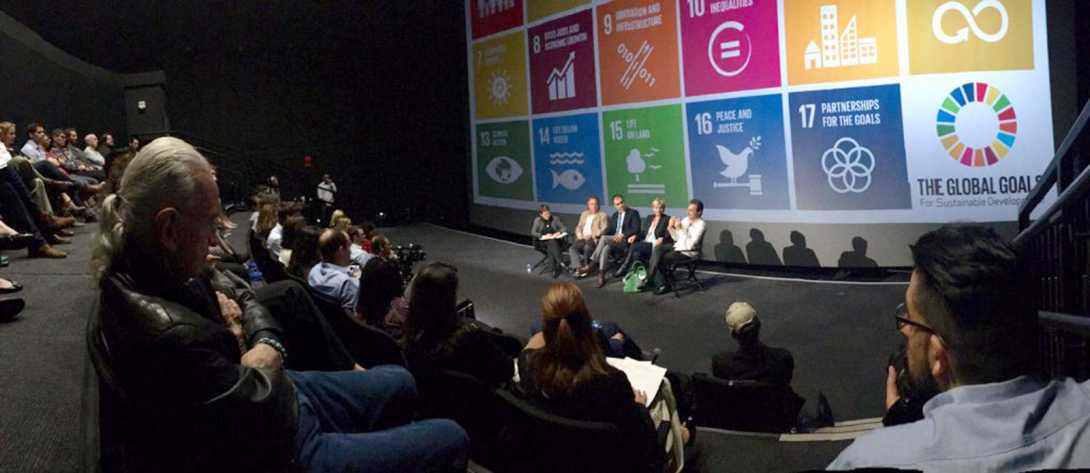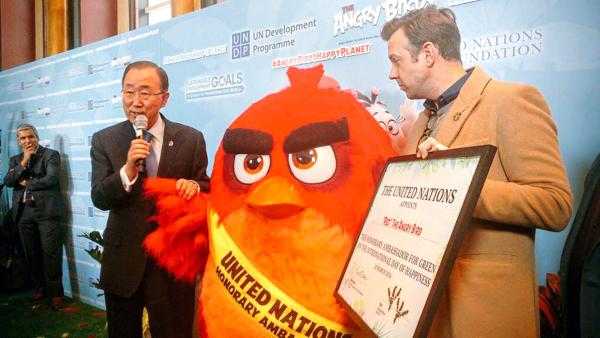Cities are vulnerable to many types of shocks and stresses, including natural hazards like storms and sea level rise, but also man-made ones like economic transformation and rapid urbanization. These shocks and stresses have the potential to bring cities to a halt and reverse years of socio-economic development gains. Cities that are to grow and thrive in the future must take steps to address these shocks and stresses. Simply put, a resilient city is one that can adapt to these types of changing conditions and withstand shocks while still providing essential services to its residents.
With the countdown on to the Paris climate change conference, there is clear evidence of growing momentum to put a price on carbon. The growth of carbon pricing around the world has been substantial. Since January 2012, the number of carbon pricing instruments already implemented or scheduled for implementation has almost doubled, jumping from 20 to 38. Moreover, the share of emissions covered by carbon pricing has increased threefold over the last decade.
Ending poverty and stabilizing climate change will be two unprecedented global achievements and two major steps toward sustainable development. But the two objectives cannot be considered in isolation: they need to be jointly tackled through an integrated strategy. This report brings together those two objectives and explores how they can more easily be achieved if considered together. It examines the potential impact of climate change and climate policies on poverty reduction.
This study is designed to analyze the energy efficiency policies in seven countries that were successful in achieving low energy intensities or in reducing their energy intensity considerably. The study analyzes the evolution of the energy intensity of these countries from 1990 to 2007, identifying points of inflection in the progress towards improvements. Changes to the policy agenda immediately upstream are explored in an effort to identify cause and affect relationships in energy efficiency improvements.
As a development institution focused on reducing poverty and boosting shared prosperity, the World Bank is working in many countries that suffer from a lack of basic services such as waste management, transportation, and access to modern energy. Addressing these development challenges often has an impact on the emission of short-lived climate pollutants (SLCPs) among them methane and tropospheric ozone, black carbon (BC), and hydrofluorocarbons (HFCs).
Stabilizing climate change entails reducing net emissions of carbon dioxide (CO2) to zero. This report outlines three principles to guide countries in their efforts to create a zero-carbon future: (a) planning ahead with an eye on the end goal; (b) going beyond carbon pricing with a policy package that triggers changes in investment patterns, technology, and behaviors; and (c) protecting poor people and avoiding concentrated losses. Although countries at different levels of income and with different endowments will adopt different strategies, all have a role to play.
This report describes efforts by the ClimateWorks Foundation and the World Bank to quantify the multiple economic, social, and environmental benefits associated with policies and projects to reduce emissions in select sectors and regions.

<blockquote class="twitter-tweet" data-lang="en">
<p dir="ltr" lang="en">"Our legacy is based around teaching...this is the beginning of making a real difference." <a href="https://twitter.com/hashtag/IMAXPowerofFilm?src=hash">#IMAXPowerofFilm<…; <a href="https://t.co/aZSzYN2ljC">pic.twitter.com/aZSzYN2ljC</a></p>
— IMAX (@IMAX) <a href="https://twitter.com/IMAX/status/710157407591071745">March 16, 2016</a></blockquote>
<script async src="//platform.twitter.com/widgets.js" charset="utf-8"></script>
<p> </p>
<blockquote class="twitter-tweet" data-lang="en">
<p dir="ltr" lang="en">C4C's <a href="https://twitter.com/LuciaGrenna">@LuciaGrenna</a> "The science is solid, now we need your storytelling power" <a href="https://twitter.com/hashtag/Film4Climate?src=hash">#Film4Climate</a> <a href="https://twitter.com/hashtag/IMAXPowerofFilm?src=hash">#IMAXPowerofFilm<…; <a href="https://twitter.com/UNEP">@UNEP</a> <a href="https://t.co/p6L9oPFbTj">pic.twitter.com/p6L9oPFbTj</a></p>
— Connect4Climate (@Connect4Climate) <a href="https://twitter.com/Connect4Climate/status/710160314730291200">March 16, 2016</a></blockquote>
<script async src="//platform.twitter.com/widgets.js" charset="utf-8"></script>
<p> </p>
<blockquote class="twitter-tweet" data-lang="en">
<p dir="ltr" lang="en">"The solution is not one, but many." <a href="https://twitter.com/TheGlobalGoals">@TheGlobalGoals</a> <a href="https://twitter.com/hashtag/IMAXPowerofFilm?src=hash">#IMAXPowerofFilm<…; <a href="https://t.co/3VTj2gu6Zy">pic.twitter.com/3VTj2gu6Zy</a></p>
— IMAX (@IMAX) <a href="https://twitter.com/IMAX/status/710162719064903680">March 16, 2016</a></blockquote>
<script async src="//platform.twitter.com/widgets.js" charset="utf-8"></script>
<p> </p>
<blockquote class="twitter-tweet" data-lang="en">
<p dir="ltr" lang="en">.<a href="https://twitter.com/LuciaGrenna">@LuciaGrenna</a> advice to young filmmakers: "cultivate your global citizenship" <a href="https://twitter.com/IMAX">@IMAX</a> <a href="https://twitter.com/hashtag/Film4Climate?src=hash">#Film4Climate</a> <a href="https://twitter.com/hashtag/IMAXPowerofFilm?src=hash">#IMAXPowerofFilm<…; <a href="https://t.co/b41H95mpVi">pic.twitter.com/b41H95mpVi</a></p>
— Connect4Climate (@Connect4Climate) <a href="https://twitter.com/Connect4Climate/status/710164648280989697">March 16, 2016</a></blockquote>
<script async src="//platform.twitter.com/widgets.js" charset="utf-8"></script>
<p> </p>
<blockquote class="twitter-tweet" data-lang="en">
<p dir="ltr" lang="en">.<a href="https://twitter.com/nsahba">@nsahba</a> "The possibilities for pro-social effects within the business of storytelling are huge." <a href="https://twitter.com/hashtag/IMAXPowerofFilm?src=hash">#IMAXPowerofFilm<…; <a href="https://twitter.com/IMAX">@IMAX</a> <a href="https://twitter.com/Connect4Climate">@Connect4Climate</a></p>
— UN Environment (@UNEP) <a href="https://twitter.com/UNEP/status/710169609681375232">March 16, 2016</a></blockquote>
<script async src="//platform.twitter.com/widgets.js" charset="utf-8"></script>
<p> </p>
<blockquote class="twitter-tweet" data-lang="en">
<p dir="ltr" lang="en">"Climate action is an urgent task"- <a href="https://twitter.com/JimKim_WBG">@JimKim_WBG</a> in <a href="https://twitter.com/Connect4Climate">@Connect4Climate</a> video <a href="https://t.co/z19CcjxrRJ">https://t.co/z19CcjxrRJ</a> <a href="https://twitter.com/hashtag/IMAXPowerofFilm?src=hash">#IMAXPowerofFilm<…; <a href="https://t.co/hbJ4cDbFBy">pic.twitter.com/hbJ4cDbFBy</a></p>
— Connect4Climate (@Connect4Climate) <a href="https://twitter.com/Connect4Climate/status/710193452420616194">March 16, 2016</a></blockquote>
<script async src="//platform.twitter.com/widgets.js" charset="utf-8"></script>
<p> </p>
<blockquote class="twitter-tweet" data-lang="en">
<p dir="ltr" lang="en">Lawrence Bender on powerful documentaries: "You have to find the emotional core,strong narrative arc" <a href="https://twitter.com/hashtag/Film4Climate?src=hash">#Film4Climate</a> <a href="https://t.co/otNKrLe0TL">pic.twitter.com/otNKrLe0TL</a></p>
— Connect4Climate (@Connect4Climate) <a href="https://twitter.com/Connect4Climate/status/710162619991072769">March 16, 2016</a></blockquote>
<script async src="//platform.twitter.com/widgets.js" charset="utf-8"></script>
<p> </p>

[video:https://vimeo.com/155172742]
<h2>Part 1. Negotiations</h2>
<p>[video:https://vimeo.com/155172739]</p>
<h2>Part 2. Developing countries</h2>
<p>[video:https://vimeo.com/155172737]</p>
<h2>Part 3. Business</h2>
<p>[video:https://vimeo.com/155172736]</p>
<h2>Part 4. Career tips from COP21 participants</h2>
<p>[video:https://vimeo.com/155172741]</p>
<div class="collapsible fa fa-pull-right fa-minus-circle" style="box-sizing: border-box; display: inline-block; font-style: normal; font-variant: normal; font-weight: normal; font-stretch: normal; line-height: 1; font-family: FontAwesome; font-size: inherit; text-rendering: auto; -webkit-font-smoothing: antialiased; float: right; color: rgb(0, 128, 0); margin-right: 0.5em; margin-left: 0.3em;"> </div>
<div class="section-content" style="box-sizing: border-box; color: rgb(51, 51, 51); font-family: Roboto, sans-serif; font-size: 16px; font-style: normal; font-variant: normal; font-weight: normal; letter-spacing: normal; line-height: 22.8571px; orphans: auto; text-align: start; text-indent: 0px; text-transform: none; white-space: normal; widows: 1; word-spacing: 0px; -webkit-text-stroke-width: 0px; display: block; background-color: rgb(255, 255, 255);">
<div class="field field-name-field-section-description field-type-text-long field-label-hidden" style="box-sizing: border-box;">
<div class="field-items" style="box-sizing: border-box;">
<div class="field-item even" style="box-sizing: border-box;">
<ul style="box-sizing: border-box; margin-top: 0px; margin-bottom: 10px;">
<li style="box-sizing: border-box;">Alexis Gazzo, Partner at Ernst & Young, Cleantech & Sustainability services: “China has become a leader for renewable energy technology and products”, and is “standard setter in the electricity grid market”</li>
<li style="box-sizing: border-box;">Jonathan Grant, Director at PwC, Sustainability & Climate Change: “You need to have a major revolution in all sectors in all countries every decade to 2050 and beyond”</li>
<li style="box-sizing: border-box;">Rachel Kyte, CEO of Sustainable Energy for All (former Vice President of the World Bank Group and Special Envoy for Climate Change): “It costs more in relief than it does to invest in resilience”</li>
<li style="box-sizing: border-box;">Balgis Osman-Elasha, Climate Change Expert at the Compliance and Safe Guards Division of the African Development Bank: “The experience of China: we need to learn from it” “We don’t want to follow the same trajectory”.</li>
<li style="box-sizing: border-box;">Joël Pain, Executive Director ‎at Ernst & Young - EMEIA Sustainable Finance Leader: “You can set up new businesses on these new bases”</li>
<li style="box-sizing: border-box;">Fran Pavley, California Senator representing California's 27th State Senate district: “There are many parts in California where the city’s economy is based on oil: the taxes they get it from oil, the jobs are from oil”</li>
<li style="box-sizing: border-box;">Clifford Rechtschaffen, Senior advisor for California Governor J. Brown, working on climate, energy, and environmental issues: “California can reach out with our counterparts even if national governments are not taking proactive action”.</li>
<li style="box-sizing: border-box;">John Roome, Senior Director the World Bank Group's Climate Change Global Practice: “Using modern technology you can get a very good sense at very low cost as to what assets and communities are exposed to various risks”.</li>
<li style="box-sizing: border-box;">Bambang Susantono, Vice-President for Knowledge Management and Sustainable Development at the Asian Development Bank: “We need local champions that on the ground make things happen”</li>
</ul>
</div>
</div>
</div>
</div>

The United Nations today announced a campaign to encourage young people to step up their actions to address climate change and ensure a sustainable and happier future for all.
The campaign is launched in partnership with the Angry Birds – the globally renowned mobile game characters – to make a direct link between tackling climate change and people’s happiness and well-being on the occasion of the International Day of Happiness.
[video:https://youtu.be/c6p7jxpzwhs]
“The Angry Birds have entertained millions of people around the world – and now they are part of making the world a better place,” said Secretary-General Ban Ki-moon, who appointed Red of the Angry Birds as an Honorary Ambassador for Green at a launch event at UN Headquarters in New York.
“We are proud to give Red a reason to go Green. There is no better way to mark the International Day of Happiness than to have our animated ambassador raise awareness about the importance of addressing climate change to create a safer, more sustainable and happier future for all,” Mr. Ban said.
The campaign, in partnership with Sony Pictures Entertainment, the UN Development Programme and UN Foundation, asks the general public across the world to make the Angry Birds happy by taking actions on climate change and sharing their photos and commitments on social media platforms using the common hashtag #AngryBirdsHappyPlanet. By recycling, taking public transportation and conserving water, for example, individuals can share tips on how they can live sustainably and happily in their everyday lives.
As part of his ambassadorial duties, Red will go on a “virtual world tour” starting on 21 March, highlighting various ways to take climate action. His tour will take him to Paris, where countries adopted an historic agreement to address climate change in December, and will end in New York, where world leaders will sign the Paris Agreement at UN Headquarters on 22 April.
During the launch event, the voice actors from the upcoming Angry Bird movie, Jason Sudeikis, Josh Gad, and Maya Rudolph, and producers John Cohen and Catherine Winder gave hundreds of students gathered in the iconic UN General Assembly Hall a sneak preview of the #AngryBirdsHappyPlanet campaign materials, including public service announcements created to support the campaign. They also asked the young audience for their support to the campaign by doing their part to make a difference on climate change.
Hosted by the World Bank Group and supported by Italy’s Ministry of the Environment and Energy Security and Germany’s Federal Ministry for Economic Cooperation and Development, Connect4Climate (C4C) is a global partnership for a livable planet that connects, creates, and communicates to build long-lasting change for future generations.



